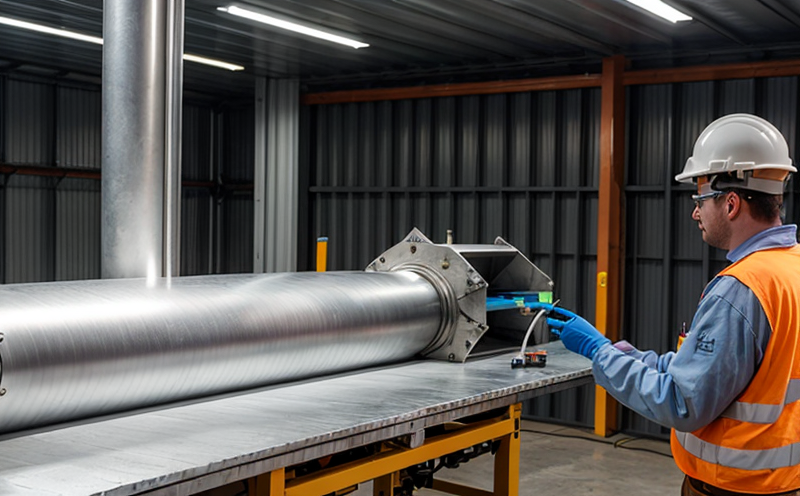ASTM D790 Flexural Testing of Renewable Polymers
The ASTM D790 standard is widely used to determine the flexural properties of various materials, including renewable polymers. This test measures a specimen's resistance to bending until it fails under load. In the context of renewable energy applications, this testing method is crucial for ensuring that materials are suitable for use in components like solar panel frames or wind turbine blades.
ASTM D790 involves subjecting a rectangular specimen to progressively increasing loads while measuring deflection and stress at specific points along its length. The flexural modulus (E) and ultimate flexural strength (σb) are calculated from these measurements. These properties are critical for predicting the durability and performance of materials under bending stresses, which is particularly important in renewable energy applications where environmental factors such as temperature changes and mechanical loads can affect material integrity.
The process begins with precise specimen preparation using standardized methods outlined in ASTM D790. This includes cutting samples from larger pieces to ensure uniformity and minimizing edge effects that could skew results. Once prepared, the specimens are mounted onto a testing machine capable of applying controlled loads while measuring displacement accurately. Modern machines like those found in our laboratory incorporate high-precision load cells and displacement sensors to provide reliable data.
In addition to mechanical properties, this test also helps assess how well certain materials resist fatigue failure over time—a key concern when designing long-lasting renewable energy systems exposed to cyclic loads. By understanding a material's flexural behavior under static loading conditions, engineers can make informed decisions about selecting appropriate materials for specific applications.
Our state-of-the-art facility is equipped with advanced testing equipment compliant with ASTM D790 standards, ensuring accurate and reproducible results. Our team of experienced technicians ensures every step from specimen preparation to final analysis adheres strictly to the prescribed procedures. This commitment guarantees clients receive reliable test data that can be trusted for making critical decisions regarding material selection.
By leveraging this testing method, manufacturers of renewable energy components can ensure their products meet stringent quality standards and perform reliably in harsh environments. It also supports continuous improvement efforts by identifying potential weaknesses early on so they can be addressed before production begins.
Benefits
The ASTM D790 flexural test offers numerous advantages for those involved in renewable energy development and manufacturing:
- Predictive Quality Assurance: Ensures that materials used in critical components will perform as expected under real-world conditions.
- Compliance with Standards: Helps companies meet regulatory requirements for product safety and performance.
- Data-Driven Decision Making: Provides valuable insights into material behavior, enabling informed choices during design phases.
- Risk Mitigation: Identifies potential issues early in the development process, reducing costly failures later on.
Industry Applications
This testing method is particularly relevant for industries focused on sustainable solutions. Renewable energy sectors such as solar photovoltaics (PV), wind power generation, and biofuel production all rely heavily on durable materials that can withstand the rigors of their operational environments.
In PV applications, frames supporting solar panels must be robust enough to endure high winds and temperature fluctuations without compromising efficiency or structural integrity. Similarly, in offshore wind farms where components face extreme weather conditions, choosing materials based on ASTM D790 results ensures longevity and reliability.
Use Cases and Application Examples
The ASTM D790 flexural test plays a pivotal role in several key areas:
- Solar Panel Frame Design: Ensuring frame materials can withstand repeated loading without failure.
- Wind Turbine Blade Manufacturing: Evaluating blade materials for their ability to resist fatigue and other stresses encountered during operation.
- Biofuel Production Equipment: Selecting materials that are not only strong but also environmentally friendly, enhancing overall sustainability.





